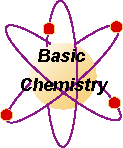Making "Slime"
Purpose:
Slime is fun to play around with and demonstrates the properties of a polymer. The polyvinyl alcohol polymer has a repeating vinyl alcohol unit of -CH2-CHOH-.
Materials and Procedure:
- Place about 20 ml of 4% polyvinyl alcohol solution in a paper cup.
- Optional: add a few drops of food coloring.
- Add 3 ml of 4% sodium borate (tetra)solution. This solution is made by putting 4 grams of sodium borate into 96 ml of water.
- Stir vigorously.
- When slime is formed, put it between paper towels to remove the excess liquid.
Discussion:
- Stretch it, roll it into a ball, leave it alone and see what happens. Slime is a polymer with cross-links of sodium borate.
- "When the two solutions of polyvinyl alcohol and sodium borate are mixed, the borate ions (B4O7-2) react with the hydroxly (OH-1) groups of the polyvinyl alcohol. Weak crosslinking within the polymer occurs to produce the viscoelastic (viscous and elastic) gel. The high solubility in water suggests that extensive hydrogen bonding exists." * from Chem Fax, 1990 by Flinn Scientific, Inc.; PO Box 219; Batavia, IL 60510
- Slime is considered non-toxic, but it is recommended to wash your hands after use. Do not eat it or get it into the eyes.
- Slime will mold so it should be refrigerated between uses.
- Slime can remove paint and will stick to carpet.
You can purchase the chemicals from many supply houses, but I like Flinn Scientific because you can get small volumes which reduces disposal problems.
To measure in "ml" you can purchase graduated cylinders from a chemical supply house like Flinn or get syringes from a vet or animal supply house. Cow syringes are nice for larger volumes. Do not get needles to go with the syringes. Beakers do not measure volumes.
Back to top
Slime is fun to play around with and demonstrates the properties of a polymer. The polyvinyl alcohol polymer has a repeating vinyl alcohol unit of -CH2-CHOH-.
- Place about 20 ml of 4% polyvinyl alcohol solution in a paper cup.
- Optional: add a few drops of food coloring.
- Add 3 ml of 4% sodium borate (tetra)solution. This solution is made by putting 4 grams of sodium borate into 96 ml of water.
- Stir vigorously.
- When slime is formed, put it between paper towels to remove the excess liquid.
Discussion:
- Stretch it, roll it into a ball, leave it alone and see what happens. Slime is a polymer with cross-links of sodium borate.
- "When the two solutions of polyvinyl alcohol and sodium borate are mixed, the borate ions (B4O7-2) react with the hydroxly (OH-1) groups of the polyvinyl alcohol. Weak crosslinking within the polymer occurs to produce the viscoelastic (viscous and elastic) gel. The high solubility in water suggests that extensive hydrogen bonding exists." * from Chem Fax, 1990 by Flinn Scientific, Inc.; PO Box 219; Batavia, IL 60510
- Slime is considered non-toxic, but it is recommended to wash your hands after use. Do not eat it or get it into the eyes.
- Slime will mold so it should be refrigerated between uses.
- Slime can remove paint and will stick to carpet.

